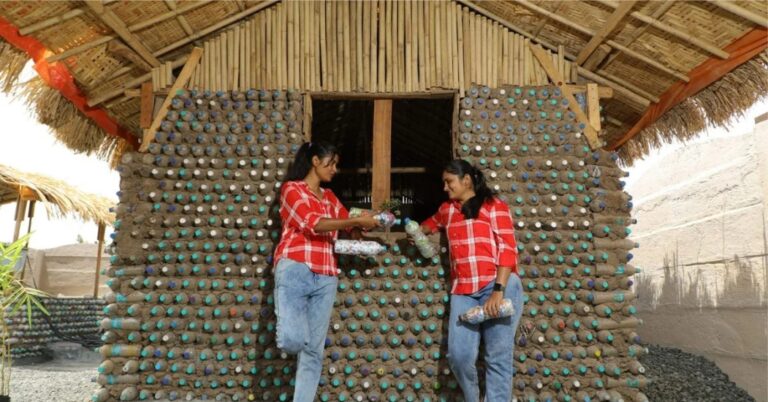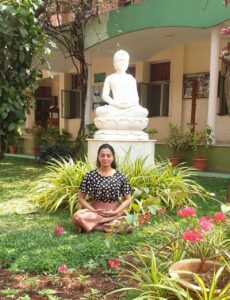![]()
In a remarkable endeavor to combat India’s plastic waste crisis, two young friends, Namita Kapale and Kalyani Bharmbe from Aurangabad, have constructed an eco-friendly house using a staggering 16,000 discarded plastic water bottles. This creative initiative not only addresses the issue of plastic pollution but also offers an eco-conscious housing solution that stays naturally cool.
India grapples with an annual production of 3.5 million tonnes of plastic waste, exacerbated by the COVID-19 pandemic’s surge in plastic production. Most of this uncollected plastic waste ends up in landfills, polluting water bodies and streets. However, Namita and Kalyani decided to make a difference by turning plastic waste into a valuable resource.
Their journey began during the 2021 COVID-19 lockdown when the pair stumbled upon a video showcasing Akshar School’s project in Guwahati, Assam. Inspired by the school’s use of cement-filled plastic bottles as student seats, Namita and Kalyani set out to build an entire house using plastic bottles. They collected discarded plastic bottles from various sources, including streets, garbage collectors, hotels, and grocery shops.
Despite facing skepticism and opposition from their families, who questioned their decision to work with waste instead of focusing on studies, the determined duo persevered. As their project gained recognition, their families came to appreciate their dedication and the positive outcomes it produced.
The construction of their eco-friendly house involved the use of mud instead of cement and the creation of eco-bricks from soil, bamboo, and non-biodegradable plastic waste. They filled 10,000 bottles with multi-layer plastic and 6,000 with soil, carefully removing excess air and packaging them in plastic bags. Civil lab engineers at the Government Engineering College, Aurangabad, verified the quality of these plastic bottles.
During a trial in July 2021, the girls faced initial setbacks as their eco-bricks, made from plastic and soil, couldn’t retain water or withstand soil erosion. To overcome these challenges, they identified Poyta soil, a stickier alternative to porous black soil. After extensive trial and error, they successfully built their eco-friendly house.
The plastic bottle bricks were stacked upon each other, with walls plastered using a mixture of soil and dung. The roof, doors, and windows were constructed using bamboo and wood. Whenever they encountered difficulties, the internet became their invaluable source of information.
With the assistance of 15 daily wage workers, it took approximately 10 months to complete their eco-friendly house. This unique dwelling consists of two square-shaped rooms, partially open, and one round hut. Remarkably, it doesn’t require air conditioners in the summer or heaters in the winter, thanks to the natural cooling properties of mud houses. The premises now host a restaurant.
In terms of cost-effectiveness, these mud and plastic houses come at a fraction of the price of cement houses, costing only Rs 700 per square foot compared to Rs 1,300 per square foot for cement construction, according to Namita.
The project was funded primarily by the two friends, who spent around Rs 7 lakh from their savings. Their families also provided financial support. The eco-friendly house, named “Wawar,” meaning a farm or open space, is expected to last for a decade or more with regular maintenance involving plastering and whitewashing using a mixture of cow dung and soil.
Their innovative work has garnered praise from visitors, including former environment minister Aditya Thackeray, who commended their efforts as worth replicating. The duo has also replicated their eco-friendly construction concept in the city and is now researching ways to use plastic bottles in roadside compounds, dividers, and multi-storey houses.
Namita and Kalyani’s inspiring journey demonstrates how creativity, determination, and sustainability can address pressing environmental challenges while offering practical housing solutions.
Reference:







